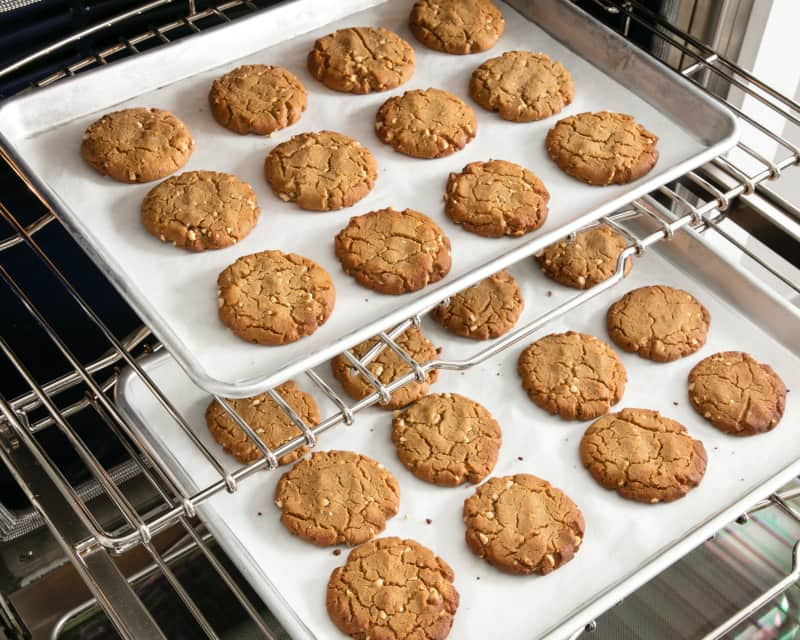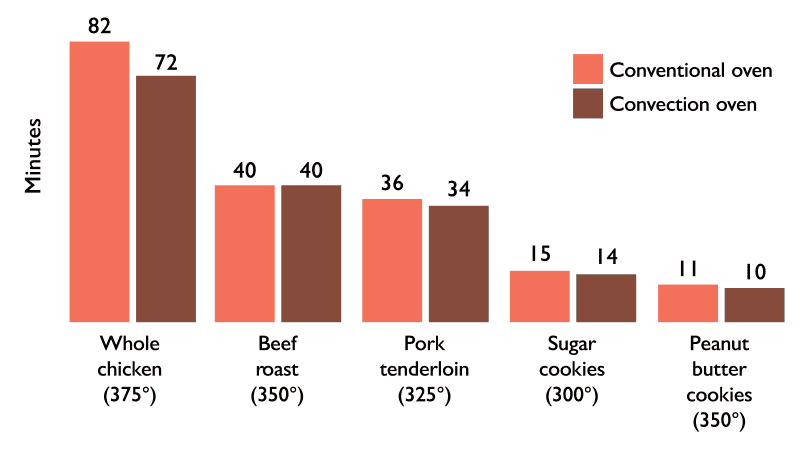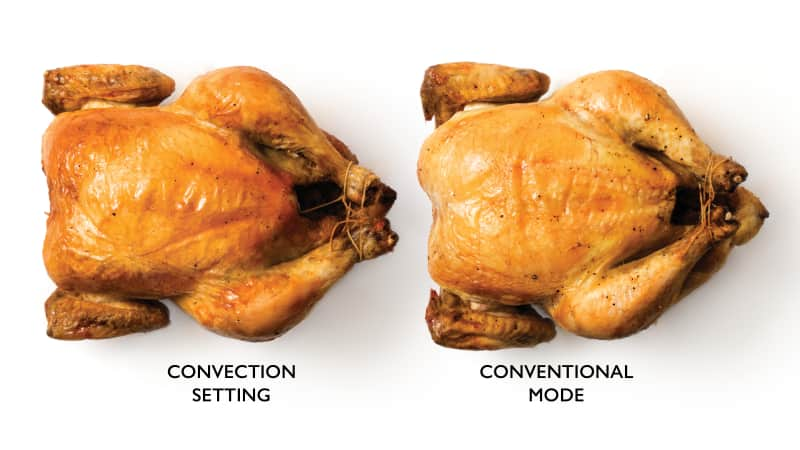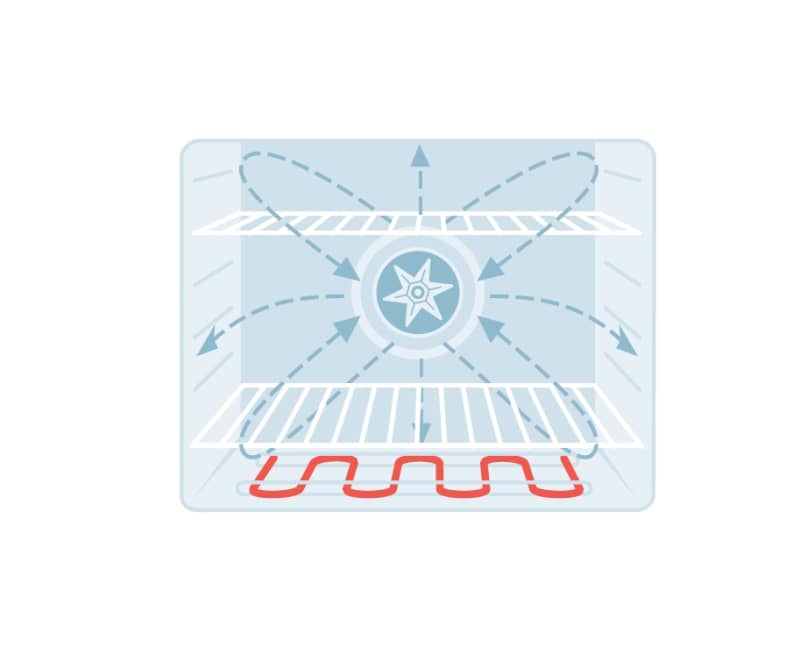We tested claims about the convection setting and came to our own conclusions.
The Truth About Cooking with Convection
Published Apr. 3, 2019.

- What Is Convection?
- Claim #1: Convection Mode Enables Multirack Cooking
- Claim #2: Convection Mode Speeds Up Cooking
- Claim #3: Convection Mode Increases Browning
- Claim #4: You Should Use Lower Heat When Using Convection Mode
- Our Conclusions and Best Practices
- When to Use Convection Mode
- When to Avoid Convection Mode
What Is Convection?
In an oven, heat is transferred from the heating element to the food by moving air currents through a process called convection. Air moves naturally when it’s heated, but a convection setting (which could more accurately be called forced convection) uses fans to encourage airflow. Circulating air around the food distributes heat more quickly and evenly and helps dry the surface of the food.
Claim #1: Convection Mode Enables Multirack Cooking
Theory: Forced convection eliminates the hot spots and cool spots that occur in conventional ovens, especially crowded ones.
Tests: We baked peanut butter cookies on baking sheets on the upper‑middle and lower‑middle racks with the convection setting and repeated this test with two sheets of sugar cookies. Both sets of cookies looked identical, indicating even baking. However, the peanut butter cookies didn’t spread as much as they should have, and both types of cookies were overbrowned.

Takeaway: Cooking in convection mode does allow food cooked on multiple racks to cook evenly. But it may also produce different and/or less desirable results than cooking on the conventional setting.
Claim #2: Convection Mode Speeds Up Cooking
Theory: Since convection mode speeds up the rate at which the air is circulated, the heat should more quickly penetrate the food and speed up cooking throughout.

Takeaway: Convection mode doesn’t guarantee faster cooking. While the surface of the food cooks more quickly, it still takes time for heat to penetrate the food, so cooking time is very much dependent on the ratio of surface area to volume.
Claim #3: Convection Mode Increases Browning
Theory: Constantly circulating air dries the surface of the food, which can increase browning, and the elimination of hot spots makes browning more uniform.
Tests: We cooked two sets of beef roasts, whole chickens, and pork tenderloins on conventional and convection settings and evaluated their appearances after cooking. All the meat browned more deeply and more evenly in convection mode.

Takeaway: Convection mode does produce deeper and more even browning on food, which can be beneficial when roasting meats.
Claim #4: You Should Use Lower Heat When Using Convection Mode
Theory: Because the surface of the food will be exposed to more heat, lowering the temperature is necessary to allow the interior of the food to cook through before the exterior sets and/or browns.
Tests: We baked peanut butter cookies and sugar cookies in convection mode at oven temperatures 25 degrees lower than their recipes called for, but the two batches of cookies still weren’t identical to the batches we baked on the conventional setting at the recommended oven temperatures. When we roasted chickens and pork tenderloins in convection mode at temperatures 25 degrees lower than called for, they didn’t brown as well as those we roasted in conventional mode at the recommended temperatures.
Takeaway: You may not need to lower the oven temperature when using convection mode. How quickly food browns and cooks depends on many variables, including its water content, shape, and size and the oven temperature.

Our Conclusions and Best Practices
Drop the oven temperature 25 degrees when first trying a recipe in convection mode. If the lower temperature causes the food to spread too much or brown too slowly, try the original temperature the next time. Note: Some ovens automatically drop the temperature 25 degrees when the convection setting is on; check your manual and increase the temperature if necessary.
Keep an eye on the food as it cooks. In general, foods with a high ratio of surface area to interior (e.g., whole chickens) tend to be more affected by convection, so you may need to stop cooking sooner than the recipe suggests.
When to Use Convection Mode
- Roasting meats that benefit from additional browning (pork tenderloin, chicken, beef roasts, pork chops, thin steaks)
- Foods in which moisture loss is desirable (granola, bacon, beef jerky, oven-dried tomatoes, fruit leather, toast, nuts, biscotti)
- Cooking food in multiple dishes or on multiple baking sheets
When to Avoid Convection Mode
- Toasting lightweight foods (bread crumbs, coconut flakes, etc.) that will blow around
- Foods that brown very easily or shouldn’t brown at all (cheesecake, high-sugar items such as chiffon or angel food cake)
- Foods that need time to spread/rise: certain cakes, cookies, and breads
